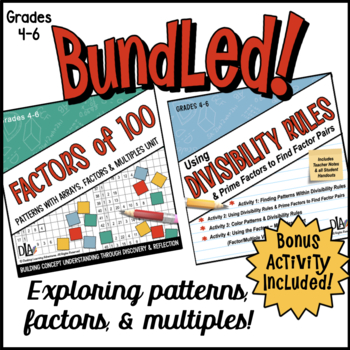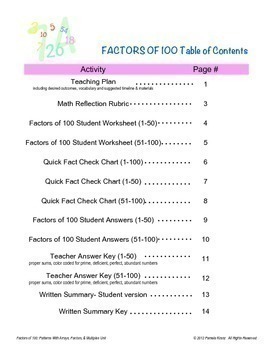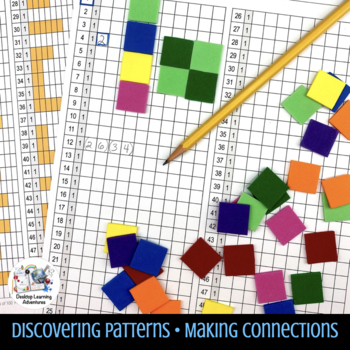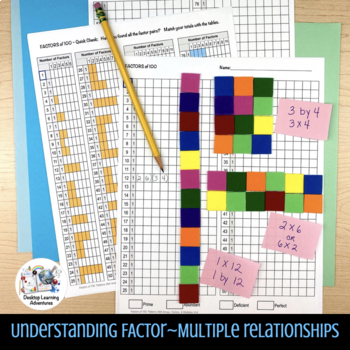Factors of 100 Unit & Using Divisibility Rules Bundle
- Zip
Products in this Bundle (2)
Bonus
Description
If you're looking for a way to take kids from concrete to abstract thinking, Factors of 100 and Divisibility Rules is the way to go. Students are reminded that math is a language that can explain what they are seeing. Teaching these units consecutively gives students a solid background with patterns and factors.
→ Factors of 100 is a week-long unit that creates a natural bridge from building arrays to establishing patterns with factors and multiples on a 100s table.
Includes:
♦ Daily Lesson Plans
♦ Self-checking Components
♦ Group Work
♦ Built-in homework
♦ Computation practice
♦ Discovery: patterns with rules that support them
♦ All Student Worksheets
♦ Ongoing assessment opportunities
♦ Easy to differentiation
Addresses: • Multiples • Patterns • Composites • Proper Factors • Square Numbers • Deficient, Abundant, Perfect Numbers • Organizing Data
It's a good beginning of the year study/review for 6th grade.
→ Divisibility Rules With Prime Factors is a great set of activities to help students understand the relationship between multiplication (factors) and division (divisors), as well as factors and multiples.
It presents that practice piece that we don’t always allow enough time for in developing understanding. Using prime number divisibility rules to find factor pairs of numbers is a good way for students to practice the division algorithm and mental math since they’re only dividing by a one-digit number at a time.
Includes:
♦ Finding patterns within the divisibility rules
♦ Practice activity testing divisibility
♦ Recognizing relationship patterns in the 120 Chart (a visual activity)
♦ Using divisibility rules with prime factors to create factor pairs
♦ student reference sheet with Divisibility Rules and Factor ~ Multiple Comparison
♦ Factor Pair VENN Activity with differentiation extensions
♦ Divisibility Rules Reference for math journals
These activities work well as a group or done independently in centers to supplement your regular lessons.
★ ★ BONUS ★ ★
Multiples of 11 is a terrific extension activity for centers or early finishers that want an extra challenge. And it's only available here!
This challenging activity has students discovering the unique patterns in numbers that have 11 as a factor. With differentiation built in, students of all ability levels are successful.
All together, there is more than two weeks of work with patterns, factors, multiples, and divisibility rules, all bundled together for a great savings!
All 3 Resources Include: Teacher Notes, Answer Keys, student printables, and Math Reflection Rubric
You might also be interested in my Crack the Code puzzles. These activities offer a fun way to practice a variety of math skills while solving for various quotes.
***************************************************************************
Customer Tips:
How to get TpT credit to use on future purchases:
Please go to your My Purchases page (you may need to login). Beside each purchase you’ll see a Provide Feedback button. Simply click it and you will be taken to a page where you can give a quick rating and leave a short comment for the product. Each time you give feedback, TpT gives you feedback credits that you use to lower the cost of your future purchases. I value your feedback greatly, as it helps me determine which products are most valuable for your classroom, so I can create more for you.
Be the first to know about my new discounts, freebies and product launches:
Look for the green star next to my store logo and click it to become a follower. Voila! You will now receive email updates about this store!
Thanks for stopping by! Pam Kranz
***************************************************************************
© Pamela Kranz Desktop Learning Adventures All Rights Reserved





